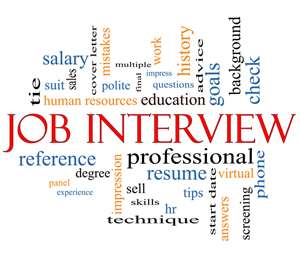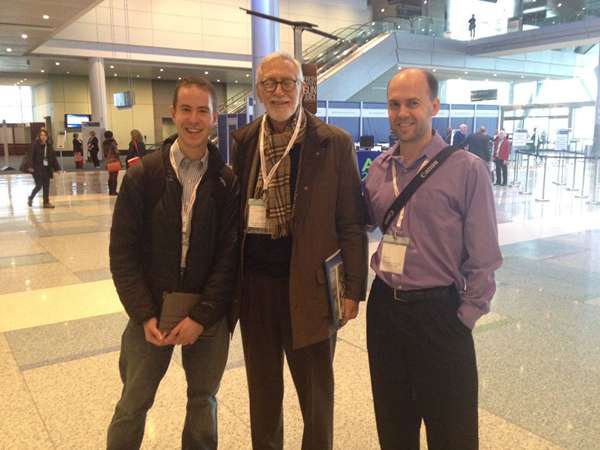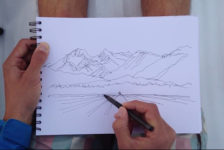Let’s be honest, going for an interview for a job is a daunting experience. Unless you have nerves of steel or have an uncanny knack for not feeling fear – a job interview can be up there in the adrenalin category with speaking in public and even bungy jumping for some people! Graduate landscape architects have an even more arduous task on their hands when compared to other professions, as not only do they need to possess a unique skill set, they must also produce examples of previous work. What are the top 10 tips for graduate landscape architects in today’s demanding and increasingly competitive field? 10. Answer every interviewer’s ultimate question

There’s a lot to take into account; image credit: Keith Bell / shutterstock.co
Every aspect of going for an interview, including all the preparation items, everything you should and shouldn’t do and all post interview tips I can give you will get you one step closer to the job, however there is only one key thing you need to do. Regardless if your hair is a mess, you dropped your portfolio in a puddle or you forget to thank everyone in the room before leaving –
ultimately, the interviewer only wants to know one thing, how you will uniquely fill their need and meet (and even beat!) their expectations for the position. Enthusiasm is the key. You are a graduate and you will not be expected to be a superstar (just yet) but show your interviewer you are keen to learn. How a prospective graduate landscape architect ‘fits’ into an office environment is essential. Show you are adaptable, happy to tackle new challenges and are friendly. By all means throw a few hobbies or interests in there (but maybe leave World of Warcraft enthusiast out, for now).
9. Know your industry 
LAN’s Cameron Rodman and Brett Lezon with renowned landscape architect Laurie Olin at an ASLA event.
Landscape architecture is somewhat of a ‘new’ profession. As a graduate you will be expected to know about the professions history and what topics are most important within the field at the moment. How landscape architects are responding to large global issues such as climate change, overpopulation and resource deletion is a valuable insight. Also research landscape architecture in your local environment. Is there a group or movement you could belong to and contribute to the profession?
8. Attitude and posture 
An interview; probably not the best place to fold your arms; image credit: sharpshutter / shutterstock.com
Your attitude throughout the interview will be the most memorable item for your interviewer. It is perfectly fine to be nervous, but after the interview has started, aim to swallow your nerves and go for it! Smile. Don’t fidget. Sit with your hands comfortably in your lap and put your shoulders back. Look the interviewer in the eye. When the interview is over, stand up, gather your portfolio, shake the hand of the interviewer and/or thank them for their time.
7. Take a copy of your resume The interviewer will already have a copy of your resume; however do take your own. With reference to your resume, the most important two words are spell check. Provide a cover letter specific to the company you are going for an interview with. Do not lie on your resume. Saying you have proficient knowledge in Autocad, when you have only used the program three times, will not bode well down the line. Explain to the interviewer you have used certain software, however would like to continue to develop your skills. Honesty will get you further and most interviewers will not expect you to be a drafting superstar as a graduate! Remember, listing Microsoft Office as software you know is slightly pointless. Everyone in the civilised world knows how to use these programs.

Bring a second CV, image credit: Tony Northrup / shutterstock.com
Not a joke – I have seen people present their portfolio by placing it on the table in front of them and talking directly to it. Spin it around, show your interviewer you mean business. Presenting your portfolio to your prospective employer is not just about highlighting your work, it is about your presentation style and skill – both verbally and visually. If you need to, stand up, take control of your presentation, it is all your work after all. Show a sense of pride in your work, explain the context briefly and outline a few programs you may have used to prepare the work. Honesty is also your best friend when presenting your portfolio, if you found a particular project difficult, say it.
5. Prepare for questions You can prepare certain answers for questions which will almost certainly come your way. These questions include: ‘What are your flaws?’ ‘What do you know about our company?’ ‘Why do you want to work for this company?’ ‘What do you hope to achieve in this company?’ ‘What are a few current trends in the industry you feel are most important?’
4. Ask questions The interview is just as much about you deciding if you would be happy with the advertised position, as it is the other way around. A great way to learn a little more and gain a more in depth understanding is to ask questions. A candidate that does not ask any questions during an interview can come across as complacent, ill prepared, doesn’t think ahead and possibly has a task-oriented nature rather than a goal-oriented nature. Ask as many questions as you need, such as: ‘What will be some initial tasks in my role within the first month?’ ‘What other opportunities are there in the company to advance?’ ‘How long did the previous employee stay with the company?’ ‘What are the next steps after this interview?’

Ask questions! – Image credit: marekuliasz / shutterstock.com
Research the firm/company/person you are going for an interview with. During the interview, referencing projects the company or person has worked on will definitely give you brownie points. Do not walk into an interview knowing nothing about who you are talking to, the company’s history and at least two notable projects the company or person has worked on.

Not too casual guys: image credit: Melle V / shutterstock.com
As a graduate landscape architect, you may be more accustomed to casual university attire, however in the real working world of the profession, cut off denim shorts, sneakers and a t-shirt are not deemed suitable. Scrub up. Wearing a collared shirt/sensible heels/ironed pant showcase you as a contender for the position. It might seem abrupt, but first impressions count. Making the effort to look presentable reflects directly on your potential working manner.
1. Post interview The thank you note is a must. Either in email or written format, thank the interviewer for their time and say you look forward to hearing from them. Get the thank you note out immediately after the interview i.e. the same day. This shows the interviewer you are on top of things and cements you as a candidate. Ask for a business card from the interviewer, so you can contact them directly. On the fifth day after the interview, follow up the interviewer with a phone call. Thank them again for their time and ask for an update on the position. The bottom line is this: If you are unsuccessful, make sure you ask the interviewer what areas you could review so as to ensure success next time.
Do not stress if you are unsuccessful, the landscape architecture field is broad, growing and exciting. The world certainly needs more landscape architects and your position is just around the corner! Article written by
Tanya Wood. Featured image: Tony Northrup / shutterstock.com
Published in Blog















